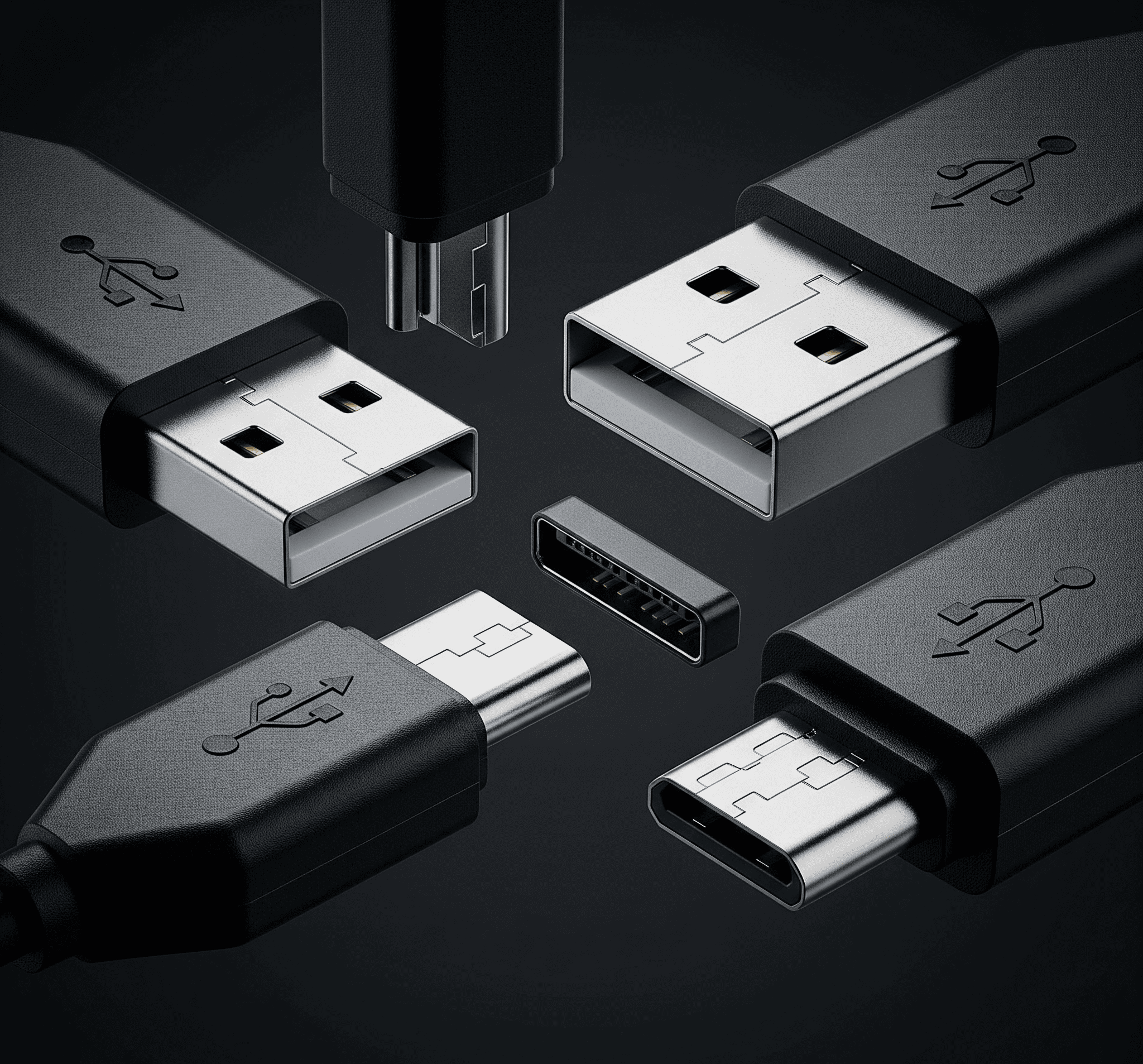Kingsgrove Branch:
USB Types

USB types, the fundamental connectors shaping how we interact with our digital world, have evolved significantly. From the humble beginnings of USB 1.0 to the lightning-fast speeds of USB4, these connectors have become indispensable. Understanding the differences between various USB types, from the ubiquitous Type-A to the versatile Type-C, is key to choosing the right connection for your needs
This exploration delves into the history, functionalities, and future of these essential ports
This article provides a comprehensive overview of the different USB types, covering their historical development, physical characteristics, data transfer rates, and power delivery capabilities. We'll also explore the various applications where each type excels, from simple data transfer to high-speed charging Get ready to unravel the mysteries behind your everyday USB connections
Understanding USB Types: From Basics to Future
USB, or Universal Serial Bus, has revolutionized how we connect devices. It's a ubiquitous technology, and understanding its evolution, the reasons behind different types, and their specific uses is key to appreciating its impact, see USB C charger
Introduction to USB Technology
USB technology has evolved significantly since its inception. Early versions were limited in speed and functionality, but advancements have led to the diverse range of types we see today. The need for faster data transfer, higher power delivery, and more compact designs has driven the development of different USB standards. These advancements are crucial for today's digital world, impacting everything from mobile devices to high-performance computers
Evolution of USB Types
The development of different USB types stems from various factors, including the need for improved data transfer rates, power delivery requirements, and more compact designs for portability. Different devices have different needs, so USB types are tailored to these specific needs
- Early USB types focused on basic connectivity, but the demand for higher speeds and more power pushed the development of subsequent generations
- As technology advanced, the need for faster data transfer rates became critical for many applications, leading to the development of faster USB standards
- The growing prevalence of portable devices also demanded more compact and efficient connectors, resulting in the evolution of USB types
USB Generations Comparison
| Speed (Mbps) | Power Delivery (Watts) |
|---|---|
| 12 | 0.5 |
| 480 | 0.5 |
| 5000 | 0.75 |
| 10000 | 1.5 |
| 20000 | 2 |
Historical Overview of USB Standards
The evolution of USB standards is a journey of continuous improvement. Each generation brought significant advancements and innovations in speed, power, and connectivity
- Early USB versions were primarily designed for basic connectivity, focusing on low-speed data transfer
- Later versions introduced higher speeds and greater power delivery capabilities, enabling the connection of more demanding devices
- Over time, USB has become increasingly integrated into various aspects of our daily lives, driving the need for ever-evolving specifications
Comparing USB Types
| Connector Shape | Applications | Disadvantages |
|---|---|---|
| Rectangular | Common for desktops and peripherals | Less portable |
| Larger rectangular | Common for older printers and external drives | Less portable, less common |
| Oval | Common for modern devices | Can be susceptible to damage |
USB Data Transfer Rates and Speeds
USB data transfer rates are a critical factor for various applications. The speed depends on the USB standard and the devices involved
USB types are a whole zoo, aren't they? You've got your standard A and B, and then there's the tiny, ubiquitous micro USB, micro usb. It was a real game-changer for phones and other portable devices, but now we're seeing even smaller and faster options emerge, keeping the USB world constantly evolving
- High-speed USB is crucial for applications requiring fast data transfer, such as video editing, large file transfers, and gaming
- Different USB standards offer different data transfer rates, catering to various needs
Power Delivery Capabilities of USB Types
USB power delivery capabilities have become increasingly important as modern devices require more power for charging and operation. Power delivery has become an essential aspect of USB design, allowing for charging and powering a broader range of devices
| Max Power Delivery (Watts) |
|---|
| 0.5 |
| 0.5 |
| 0.75 |
| 1.5 |
| 2 |
Applications and Use Cases, Usb types
- Printers: Type-B connectors are common in older printers
- Cameras: High-speed USB is used for transferring large image files
- Mobile devices: Type-C is prevalent for modern smartphones and tablets
- External Hard Drives: Higher-speed USB types are preferred for fast data transfers
Future Trends and Innovations
Future USB technology will likely focus on even faster data transfer rates, greater power delivery capabilities, and more compact designs. This will further enhance the versatility of USB in the future
Creating a Comprehensive Article
To write a comprehensive 1500-word article, a structured approach is needed. This includes detailed descriptions, comparisons, and real-world examples to strengthen the article
- The article should have clear sections, subheadings, and detailed explanations for each topic.
- Incorporating visual aids like tables and images will significantly enhance the article's clarity and appeal
- Real-world examples and case studies will provide context and demonstrate the practical applications of USB technology
Last Recap: Usb Types
In conclusion, the evolution of USB types reflects a fascinating journey of technological advancement. From the initial limitations of early USB standards to the remarkable capabilities of modern iterations, the USB connector has adapted to meet the ever-increasing demands of our digital devices. This exploration highlights the key differences between various types, allowing users to make informed choices when connecting their devices
USB types are a bit of a zoo, aren't they? From the trusty old USB-A to the sleeker, newer USB-C, it's a bit of a wild ride. Want to dive deeper into the fascinating world of USB-C to USB-A transitions? Check out this great resource on USB type A for a detailed breakdown of the different cables and connectors
Learning about these transitions helps you navigate the various USB types with ease
As technology continues to progress, the future of USB types promises even more innovation and functionality
Frequently Asked Questions
What's the difference between USB 2.0 and USB 3.0?
USB 3.0 significantly boosted data transfer speeds compared to USB 2.0. Think of it as a major upgrade, offering much faster file transfers and improved overall performance
Which USB type is best for charging my phone?
USB-C is generally the preferred choice for fast charging, thanks to its higher power delivery capabilities. However, older phones might use different types, so always check your device's specifications
Are there any USB types that are obsolete?
Yes, some older USB types like Mini-B and Micro-B are becoming less common as newer, more versatile types gain popularity
What are the advantages of USB4?
USB4 is a newer standard that delivers even faster data transfer speeds and power delivery compared to earlier versions, and is compatible with many of the newer devices
Recent posts

Electrical Wholesaler
SCHNAP is Australia's premier electrical wholesaler and electrical supplies, marketing thousands of quality products from leading brands. Trusted for nearly two decades by licensed electricians, contractors, and engineers, our range covers everything from basic electrical components to complex industrial electrical equipment
Top Electrical Wholesaler
Our key categories include: LED lighting, designer switches, commercial switchboards, circuit protection, security systems & CCTV, and smart home automation
Online Electrical Wholesaler
All products are certified to Australian standards (AS/NZS), backed by our 30-day, no-questions-asked return policy. Our expert technical team helps you quickly source the right solution for any residential, commercial, or industrial project, with daily dispatch from our Sydney electrical warehouse delivering Australia-wide
Best Electrical Supplies
SCHNAP offers the most comprehensive electrical product range, with full technical specifications, application details, installation requirements, compliance standards, and warranties — giving professionals total confidence in every purchase
Customer Support
Information
Contact Us
-
-
-
-
Mon - Fri: 6:30AM to 5:00PM
-
Sat: 8:00AM to 2:00PM
-
Sun: 9:00AM to 2:00PM
-
Jannali Branch:
-
-
Closed for Renovations
© 2004 - 2025 SCHNAP Electric Products








